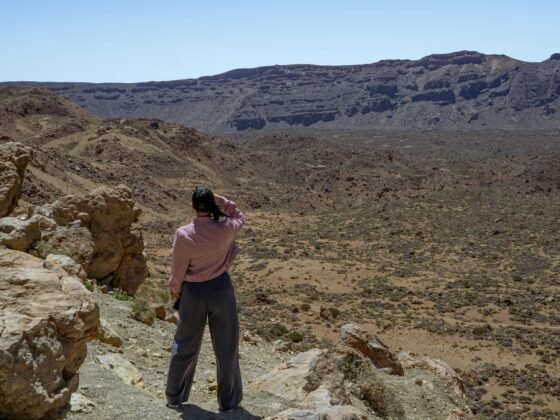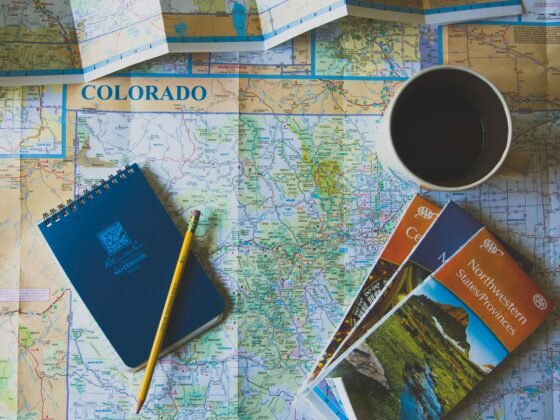Consider stepping into a place where ancient stories become real, where myths mix with reality. Greece, with its rich mix of old stories, gives you a special chance to walk where gods and heroes walked.
From the high peaks of Mount Olympus, the home of gods, to the holy grounds of Delphi where the Oracle once gave advice for old decisions, Greece is a place full of tales about gods. As you start this tour about myths, you will explore the winding ruins of Knossos, home to the scary Minotaur.
You’ll trace the big trips of old heroes like Hercules, Odysseus, and Jason. Each place you see is like a door to the past. Here, stories about gods, goddesses, and mythical creatures happen.
Whether you are looking closely at the big Parthenon, which is for the goddess Athena, or thinking about the strange pull of the Sirens, Greece gives an adventure that mixes old and new, myths and reality.
Exploring the Mythical World of Greece
Lets dive into the heart of Greece, let’s go. Every place, which has a story about gods, heroes, and old secrets waiting to be found.
Mount Olympus: Where the Gods Were Born
Mount Olympus, called the “home of the gods,” is very important in Greek stories. Picture it as the ultimate royal palace, high above the world of mortals. This big and impressive mountain, the highest in Greece, was thought to be where the Twelve Olympian gods lived.
Each god had their own palace here, and Mount Olympus was a busy center of godly activity and rule. The mountain itself was so sacred that mortals couldn’t step on its slopes. This made it a special divine place. Many big myths are tied to Mount Olympus, showing how important it is in stories.
The Twelve Olympian gods included Zeus, the king of the gods; Hera, the queen of the gods; Poseidon, the god of the sea; and Athena, the goddess of wisdom. On Mount Olympus, these gods met to talk and decide what happened to both gods and humans.
Some famous stories about Mount Olympus include the Titanomachy, the big war between the Olympian gods and the Titans, and the adventures of the gods with each other and people.
Here is a list of the Twelve Olympian gods who called Mount Olympus their home:
- Zeus: King of the gods, god of the sky and thunder.
- Hera: Queen of the gods, goddess of marriage and family.
- Poseidon: God of the sea, earthquakes, and horses.
- Demeter: Goddess of agriculture and the harvest.
- Athena: Goddess of wisdom, courage, and war.
- Apollo: God of the sun, music, and prophecy.
- Artemis: Goddess of the hunt, wilderness, and childbirth.
- Ares: God of war.
- Aphrodite: Goddess of love and beauty.
- Hephaestus: God of fire, metalworking, and craftsmanship.
- Hermes: Messenger of the gods, god of trade and travel.
- Hestia: Goddess of the hearth and home.
Delphi: The Center of the Ancient World
Delphi, called the “navel of the world,” was very important in Greek religion and stories. Think of it as the center for spiritual and political advice, like a main city where big choices are made. At the heart of Delphi was the Oracle, known as the Pythia. She spoke for the god Apollo.
People from all over Greece, and even from farther away, came to Delphi to ask the Oracle’s counsel about many things, from personal problems to big state issues. The Oracle’s sayings were very respected and often changed many important choices, like deciding to go to war or setting up new colonies. This holy place was not only for predictions; it was also a big cultural and religious center. It hosted the Pythian Games.
They were almost as big as the Olympics. The stories about Delphi, such as Apollo defeating the Python to claim the place, show its divine importance and its role as a vital place for both gods and people.
Crete and the Minotaur’s Maze
The myth of the Minotaur and the labyrinth is one of the most interesting Greek stories. It’s centered around the island of Crete and the big palace of Knossos. Think of the labyrinth as a detailed maze, made to be so confusing that escape was almost impossible.
The story says that King Minos of Crete asked the skilled craftsman Daedalus to build this maze to lock in the Minotaur, who was a scary creature with a human body and a bull’s head. The Minotaur was the child of Minos’ wife, Pasiphae, and a divine bull, which was seen as a curse on the royal family. Every year, Athens had to send seven young men and seven young women.
They were to be eaten by the Minotaur until the hero Theseus decided to stop this terror. With help from Minos’ daughter, Ariadne, who gave him a ball of thread to find his way in the maze, Theseus killed the Minotaur and got out. The ruins of Knossos, with its fancy palace, are thought to be the base for this myth.
The remains show a really advanced society with great buildings, which fit the grandness told in the legend. King Minos in this myth stands for the mix of human and god-like power, while Theseus shows the hero’s path of courage and cleverness.
Epic Adventures of Mythical Heroes
We will start a trip through the famous stories of some of Greece’s well-known heroes, and their stories of bravery and adventure have inspired many people.
Hercules’ Twelve Daring Tasks
Hercules, famous for his great strength and deeds, was given the job of finishing twelve almost impossible tasks as a kind of punishment. These jobs were made to test his strength, bravery, and cleverness, like a big adventure. Here’s a list of the twelve tasks and quick descriptions:
- Slay the Nemean Lion: He had to beat a lion with skin that couldn’t be damaged.
- Slay the nine-headed Lernaean Hydra: A snake-like beast that got two new heads for each one cut off.
- Capture the Golden Hind of Artemis: A sacred deer with golden horns.
- Capture the Erymanthian Boar: A huge and dangerous wild pig.
- Clean the Augean stables in a single day: Stables not cleaned in 30 years.
- Slay the Stymphalian Birds: Birds that ate people and had metal feathers.
- Capture the Cretan Bull: A strong bull that caused trouble in Crete.
- Steal the Mares of Diomedes: Horses that ate people, owned by King Diomedes from Thrace.
- Obtain the girdle of Hippolyta, Queen of the Amazons: A belt worn by the queen of the warrior women.
- Capture the cattle of the monster Geryon: Cows guarded by a giant with three bodies.
- Steal the apples of the Hesperides: Golden apples watched over by a dragon.
- Capture and bring back Cerberus: The three-headed dog guarding the Underworld’s entrance.
These tasks weren’t only about Hercules’ physical power but also his smartness and will. They mean a lot in Greek myths, showing the win of human spirit and determination over hard challenges. Hercules finishing these jobs made him one of the top heroes in Greek myths, inspiring many stories, art, and cultural mentions through time.
Odysseus’ Epic Journey
Odysseus’ long trip, told in Homer’s “The Odyssey,” is about adventure, strength, and the constant quest to get back home. Think of it as a hard journey where every part brings a new and sudden challenge. After the Trojan War, Odysseus starts his ten-year trip to Ithaca. He faces many challenges.
He meets the Cyclops Polyphemus and blinds him to escape, and Circe, who turns his men into pigs. Odysseus also deals with the Sirens’ song, goes past the monster Scylla and the whirlpool Charybdis, and faces the anger of the sea god Poseidon.
Each trial tests his cunning, bravery, and determination. Even with the gods’ meddles and the dangers he meets, he keeps moving to be with his wife Penelope and son Telemachus again. His trip is not just a physical one but is also a deep look at human strength and the lasting power of hope and loyalty.
Jason’s Quest for the Golden Fleece
Jason’s search for the Golden Fleece is a well-known story in Greek mythology, like a big search full of tough challenges. The Golden Fleece, which means authority and kingship, was in the far land of Colchis. Jason, who should be the king of Iolcus, was given the job of getting it back to take back his kingdom from his uncle Pelias.
To do this, he put together a group of heroes called the Argonauts. It had famous heroes like Hercules, Orpheus, and Atalanta. Their trip on the ship Argo was full of dangers, like the rocks called the Symplegades that smashed together, the harpies that bothered the blind prophet Phineus, and the dragon that watched over the fleece.
Important people in this story include Medea, the daughter of the Colchian king, who was a sorceress, and she fell in love with Jason, using her magic to help him win. The search for the Golden Fleece matters not just because it’s an exciting story, but also because it is about bravery, loyalty, and going after what is right.
This myth has left a big mark on Greek culture, making many stories and pieces of art, and shows why big adventures and heroic deeds are always interesting. If you want to know more about the interesting Greek Mythology world, check out MysteryInHistory for more content.
Must-See Ancient Sites and Temples
Having looked at the big stories of Greek heroes, now we focus on the ancient sites and temples where these stories seem real.
Exploring the Parthenon: Athena’s Temple
The Parthenon, which sits on the Acropolis in Athens, is an amazing piece of old Greek building work and a sign of the city’s best times. It was built between 447 and 432 BCE, as a temple for Athena, the main goddess of Athens.
Its building importance is because of its exact measurements and the use of the Dorc style, known for simple lines and a grand look. Think of it like a very famous building today, such as the Eiffel Tower, showing the best building work of its time.
The Parthenon had a big statue of Athena Parthenos, made by the famous sculptor Phidias, which stood as proof of the city’s love for their goddess. The temple’s friezes and metopes show different mythological scenes, adding to its cultural and historical significance. Known for wisdom, war, and crafts, Athena is closely tied to the Parthenon and Greek mythology.
The story goes that Athena gave Athens an olive tree, which means peace and wealth, while Poseidon, her rival, offered a saltwater spring. The people picked Athena’s gift, leading to the city being named after her. The Parthenon was not only a religious spot but also a sign of Athenian strength and cultural pride.
By visiting the Parthenon, you walk where old Athenians walked, who looked up to Athena as their protector and leader, showing values like wisdom, bravery, and culture.
Fascinating Mythical Creatures
After looking at the importance of ancient temples, now we can look into the interesting world of mythical creatures that fill Greek mythology.
The Sirens: Sea’s Hypnotizing Singers
Known in myths, Sirens are some of the most captivating and risky creatures in Greek tales, famous for their magical voices that led sailors into danger. These beings, part-woman, part-bird, lived on rocky islands. They used their hypnotizing voices to lure sailors towards dangerous shores, causing shipwrecks. Think of the Sirens’ song as a strong temptation, like an advertisement you shouldn’t follow but can’t ignore. In Homer’s ‘The Odyssey’, Odysseus meets the Sirens.
Knowing their dangerous charm, he tells his men to cover their ears with beeswax while he ties himself to the mast to safely hear their song. The Sirens mean the risks of temptation and the dangerous appeal of the unknown, acting as a warning in old Greek culture. Their story highlights the importance of self-control and awareness, themes valued in Greek society.
Medusa and the Gorgons: The Deadly Sisters
Once, Medusa was a beautiful maiden, but she turned into a Gorgon because the goddess Athena punished her. Myths say that Medusa was cursed as she disrespected Athena’s temple by being with Poseidon there. Because of this, venomous snakes became her hair, and anyone who looked at her would turn into stone. Medusa, along with her sisters Stheno and Euryale, made up the three Gorgons, scary beings in Greek myths.
The Gorgons mean the idea of monstrous femininity and the power of the look. Their image in art, which was on shields and temple decorations, worked both as a protector sign and a reminder of what happens if you defy the gods.
Key points about the Gorgons include:
- Transformation: Medusa’s change from beauty to monster means the extreme results of making the gods angry.
- Symbolism: The Gorgons show the scary power of women and the concept of being frozen by fear.
- Artistic Representation: Gorgons were often shown in old Greek art, used to scare away bad things.
The Centaurs: Man-Horse Beings
These mythical creatures, the Centaurs, that have a body of a horse and a man’s torso, are thought to come from the joining of Ixion, a regular king, and a cloud shaped like the goddess Hera. They are often shown as wild and hard to control, representing the untamed parts of human nature.
Centaurs can be seen as showing the struggle between our refined selves and our basic instincts. In Greek stories, Centaurs play different roles, from the wise and noble Chiron, who taught heroes like Achilles and Hercules, to the more chaotic and violent Centaurs who fought the Lapiths during a wedding. Symbolically, Centaurs mean the tension between reason and wildness, highlighting the importance of balance and self-control.
The stories about them remind us of the complex nature of humans and the need to settle our inner conflicts.
Images from Canva: Mount Olympus – by bloodua. Hercules Statue – by Marcus Lindstrom. Temple of Athena – By Rixie. Preseus Statue with Medusa – by paologallophoto












